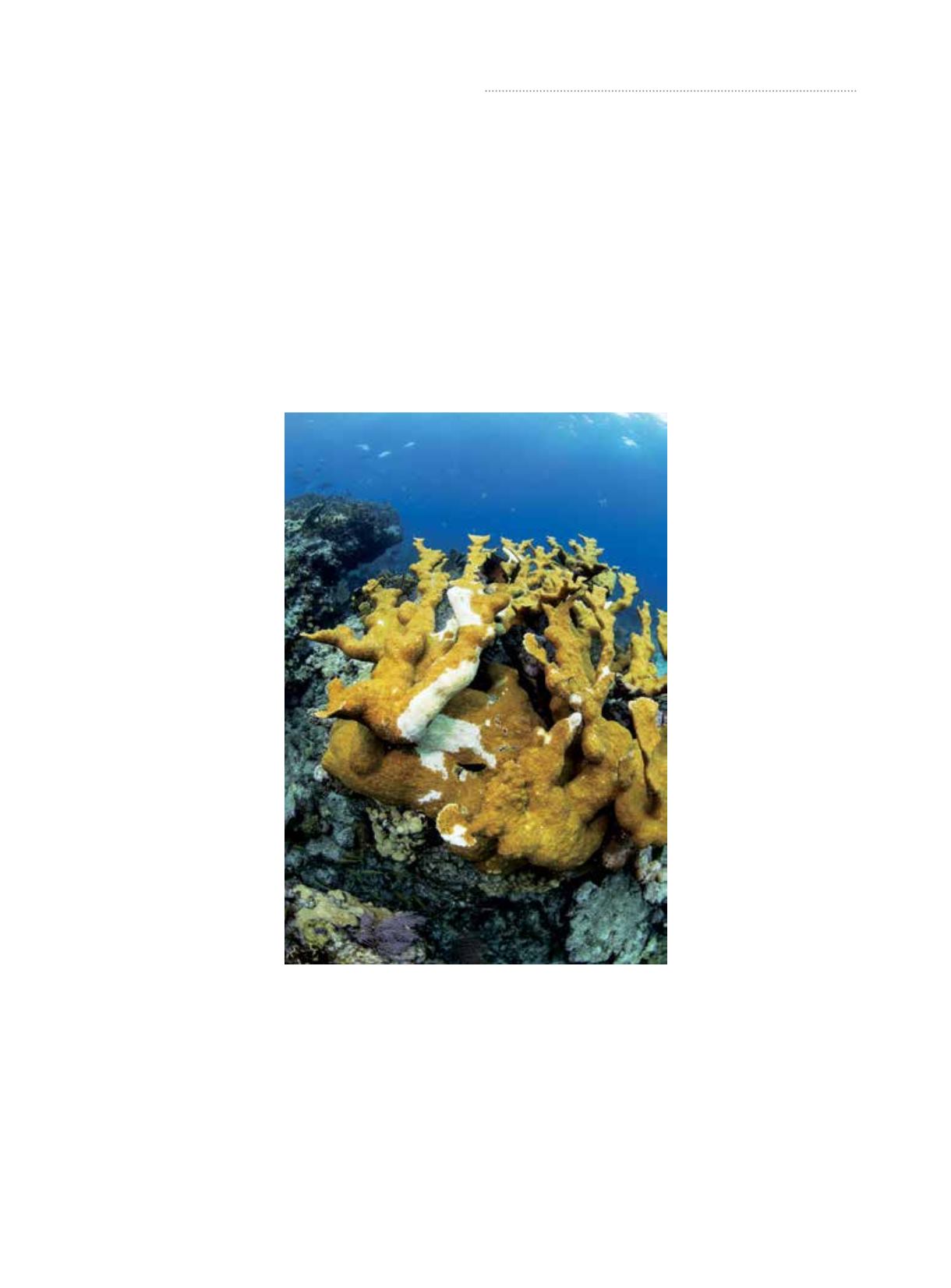
 ALERTDIVER.COM
ALERTDIVER.COM
|
17
bleach when exposed to prolonged heat stress. We
also showed that oxybenzone is genotoxic, meaning
that it damages coral DNA as well as induces severe
and lethal deformities. Most alarming, we determined
that oxybenzone also acts as an endocrine disruptor,
causing the coral larvae to inappropriately encase
itself in its own stony skeleton — at a time in its
development when it should not even have a skeleton.
Our research demonstrated that these pathologies can
occur at concentrations as low as 62 parts per trillion.
For perspective, beaches in Hawaii have oxybenzone
levels higher than 700 parts per trillion early in the
morning before swimmers even arrive. Other emerging
research is showing that oxybenzone concentrations
on nearshore reefs around the world are commonly
between 100 parts per
trillion and 100 parts
per billion — well within
the range of being a
significant environmental
threat.
Oxybenzone is toxic
to more than just corals.
It’s toxic to algae,
sea urchins, fish and
mammals. It inhibits
embryonic development
in sea urchins. It can
result in gender shifts in
fish, in which male fish
take on female attributes,
while females have
reduced egg production
and embryo hatchings.
In mammals it has been
demonstrated to be a
potential mutagen and to
exhibit procarcinogenic
activity. Studies in
both mice and rats
showed that exposure
to oxybenzone increases
liver and kidney weights,
reduces immunity, increases uterine weights in
juveniles and reduces fertility. In recent studies, human
couples whose urine contained higher concentrations
of benzophenones had a harder time getting pregnant,
while men with higher concentrations had higher levels
of diseased sperm. Both dolphin and human mothers
can transfer oxybenzone to their infants via breastmilk.
There are a host of other chemicals in sunscreen
that are potentially toxic to coral reefs, some of
which — including methoxycinnamate and camphors
— are on the International Chemical Secretariat’s
SIN (Substitute it Now) list based on their activity
as endocrine disruptors to humans and wildlife.
Noncoated nanoparticles (less than 35 nanometers
in diameter) of zinc oxide and titanium dioxide
(referred to as “mineral-based” sunscreens) can be
toxic to corals, fish and other reef organisms. Their
toxicity arises from both their miniscule size and their
interaction with cells, as well as the fact that they
cause oxidative stress in sunlight (i.e., they too can
cause coral bleaching). Non-nanotized (commercial
designation above 150 nanometers in diameter) coated
zinc oxide and titanium
dioxide don’t readily
exhibit acute toxicities.
Nanoplastic ultraviolet
(UV) absorbers, which
commonly have
diameters of around 350
nanometers, are also not
necessarily toxic to the
marine environment,
though their nanotized
property may be a cause
for concern.
An “organic”
certification doesn’t
mean a sunscreen is safe
for the environment. A
number of plant-based
oils can be toxic to reef
organisms, especially
arthropods. For example,
neem, eucalyptus and
lavender oils, which are
used in some organic
sunscreens, also have
applications as insect
repellents or insecticides,
suggesting they may also
have increased relative toxicity to invertebrates. Other
ingredients such as beeswax can be contaminated
with a variety of industrial fungicides and insecticides.
Organic ingredients, or any ingredient in a product,
should be subjected to toxicological testing.
Silicone polymers, cyclic siloxanes
(e.g., octamethylcyclotetrasiloxane and
decamethylcyclopentasiloxane) and other alternatives
to oils warrant some concern. These organosilicon
compounds are not biodegradable and can bioaccumulate
in aquatic and marine organisms, including edible fish.
Oxybenzone and many other common sunscreen ingredients are
now known to damage corals, even in extremely low concentrations.
Opposite: Fortunately, demand by concerned consumers is leading
to increased availability of less harmful sunscreens.
STEPHEN FRINK
















